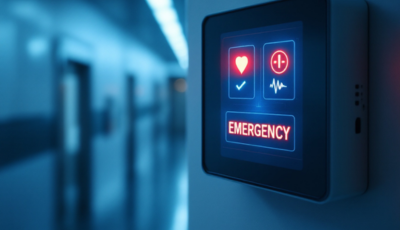A robust cloud computing security architecture defines the blueprint for protecting data, applications, and infrastructure across service models and deployment environments. With hybrid and multicloud strategies becoming mainstream, organizations face heightened risks from misconfigurations, unauthorized access, and shifting regulatory requirements. A resilient architecture not only addresses these threats but also enables innovation and adaptability.
This roundup presents five top practices for structuring a secure cloud environment, followed by a comparison of leading architecture frameworks. By embracing a shared responsibility model, enforcing granular controls, and embedding continuous monitoring, businesses can achieve a posture that withstands evolving cyber threats while supporting strategic objectives.
Embrace Shared Responsibility
A resilient security architecture begins with a clear shared responsibility model. Cloud service providers secure the underlying infrastructure—from physical data centers to virtualization layers—while organizations retain accountability for data protection, user management, and workload configurations. In IaaS scenarios, for example, providers safeguard hardware and hypervisors, whereas customers manage operating systems, applications, and identity controls.
Establishing a comprehensive cloud computing security policy helps define roles, responsibilities, and escalation paths. Regular reviews ensure that updates from providers—such as new mitigation guidelines—are incorporated promptly. For instance, the Cybersecurity and Infrastructure Security Agency and the National Security Agency have released joint Cybersecurity Information Sheets to guide organizations on best practices for cloud security (CISA).
Establish Security Controls
Baseline security controls act as the foundation for any architecture. Organizations may consider implementing:
- Network segmentation to isolate critical workloads and reduce an attack surface
- Intrusion detection and prevention systems tuned for cloud traffic
- Configuration baselines enforced through Infrastructure as Code policies
Conducting periodic cloud security assessment sessions helps uncover misconfigurations and compliance gaps. Automated tools can flag deviations across IaaS, PaaS, and SaaS environments, ensuring consistent posture management and timely remediation.
Deploy Access Management
Identity and Access Management (IAM) services form the gatekeepers of cloud environments. By applying the principle of least privilege, organizations limit each account or service to only the permissions required for its function. Key practices include:
- Enforcing multi-factor authentication for administrative and user access
- Designing role-based access control models aligned with organizational structure
- Rotating credentials and API keys to reduce exploitation risk
Incorporating native IAM functions from cloud platforms, combined with centralized logging, enables granular audits of user activity and anomalies. This approach mitigates threats such as privileged account hijacking and insider misuse.
Apply Data Encryption
Encryption is a cornerstone of confidentiality and integrity within cloud environments. Sensitive data should be encrypted both at rest and in transit, using robust algorithms and secure key management. Organizations may implement:
- Symmetric encryption for high-performance bulk data protection
- Asymmetric encryption for secure key exchange and digital signatures
- Automated key rotation and storage in Hardware Security Modules or managed key vaults
Effective encryption practices ensure compliance with industry regulations and protect intellectual property against unauthorized access. For deeper guidance on algorithms and integration, see cloud encryption best practices (CrowdStrike).
Enable Continuous Monitoring
A resilient architecture relies on real-time visibility and rapid response. Cloud Security Posture Management (CSPM) and Security Information and Event Management (SIEM) tools help detect misconfigurations, anomalous behaviors, and policy violations. Organizations should:
- Integrate CSPM into CI/CD pipelines for early detection of insecure deployments
- Leverage automated alerts for unauthorized changes to critical resources
- Regularly review security logs and threat intelligence feeds
Continuous monitoring facilitates proactive risk mitigation and aligns with DevSecOps practices. Automation reduces manual overhead while ensuring that security keeps pace with rapid infrastructure changes.
Compare Architecture Frameworks
The following table contrasts common approaches for designing a cloud security architecture. Each framework offers unique strengths, guiding organizations toward a tailored solution.
Summarize Key Takeaways
Building a resilient cloud security architecture depends on a coordinated blend of organizational policy, technical controls, and continuous oversight. The five practices outlined—embracing shared responsibility, establishing controls, deploying IAM, applying encryption, and enabling monitoring—form a comprehensive strategy. Selecting an architecture framework should align with business objectives, regulatory demands, and the chosen deployment model.
By systematically applying these practices and choosing the right framework, IT leaders can reduce risk, streamline security operations, and support innovation goals without compromising trust.
Need Help With Cloud Security Architecture?
Organizations seeking to strengthen their cloud security posture may find the selection and integration of best practices and frameworks complex. We help by evaluating current environments, mapping requirements to leading architectures, and connecting businesses with solutions that align to strategy and budget. To explore how we can support your cloud security initiatives and streamline vendor selection for cloud connect solutions, connect with our team today.





